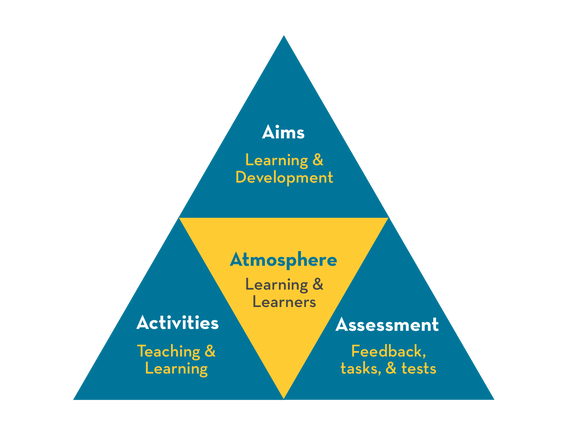With Aligned Course Design "learning [aims] define what we should be teaching, how we should be teaching it, and how we could know how well students have learned it" (Biggs and Tang).
A "backwards design" (Wiggins and McTighe) process includes three components:
- Identify desired results (cognitive, affective, kinesthetic learning aims).
- Determining appropriate assessments (multiple means for students to demonstrate level of learning).
- Planning learning and teaching activities (during class preparation, peer interactions, and class session activities students gain practice and feedback related to aims).

The 4As framework
The 4As framework presents a practical and reflective design process you can rely on when creating new courses or redesigning existing courses.
The four framework elements each making a specific contribution to the design process and include:
- Creating an atmosphere that supports learning, so that students become learners.
- Writing aims that reflect what we intend as these points of “arrival” for learner.
- Selecting teaching and learning activities that align with aims and assessments to engage learners constructing meaning and practicing aims-related skills through relevant learning activities.
- Developing multiple assessment opportunities and formats that engage learners in sequentially and/or cumulatively demonstrating their mastery of the intended aims.